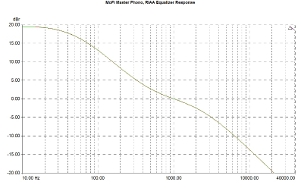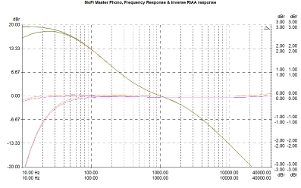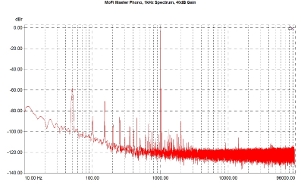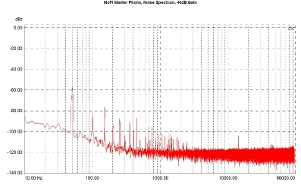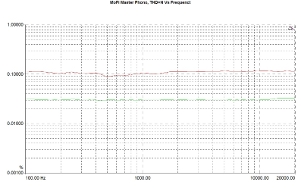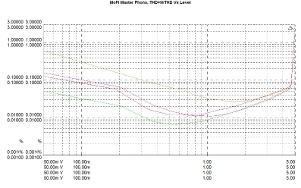about Audio, High Fidelity
& Home Entertainment technologies
pid: 607-2025/10/01 (v1.2)
Privacy Policy
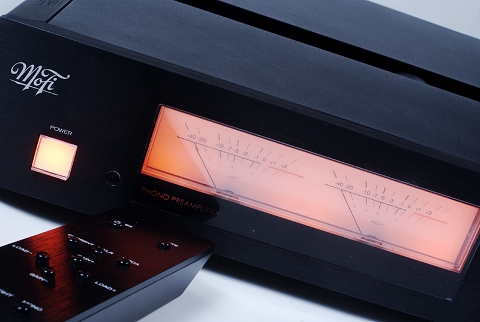
The sensitivity measurements showed that the MasterPhono is a typical phono preamplifier in this regard. With the gain set to 40dB (for MM cartridges), it requires 4mVrms for a -10dBV output, while at 60dB (the standard setting for MC), it requires 0.53mV for the same output level. The overload margin, referenced to these input levels, was calculated at 24.5dB for both settings, a value that can be considered good.
Distortion values are low, at 0.005% and 0.009% for 40dB and 60dB gain, respectively (THD), with an increasing trend depending on frequency (0.012% and 0.019%, respectively, at 10kHz). The total harmonic distortion and noise measurement (THD+N) logically resulted in higher values, with noise being the dominant factor (0.03% and 0.10% for 40dB and 60dB gain, respectively). The fact that noise plays the most significant role in this measurement is evident from the minimal increase in these values when measured at higher frequencies.
Noise performance is excellent, especially at the lower gain setting (40dB), where we measured -73dBr(A) referenced to -10dBV, and -83dBr(A) referenced to 0dBV. (The latter is a logical result, but the stricter measurement is more realistic, given that the phono stage connects to a line-level input and not to a power amplifier.) Channel separation was also at a good level, reaching -78dB at 10kHz, referenced to a -10dBV output level.
RIAA equalization accuracy is outstanding. The maximum deviation observed was 0.13dB at the 75μs time constant, but the circuit consistently maintained precision to the second decimal place throughout the rest of the measurement spectrum, with deviations of 0.05dB at 3180μs and 0.08dB at 318μs. Channel balance was also exceptional, with a maximum deviation of just 0.07dB—certainly one of the best performances we've seen.
These results are best reflected in the frequency response of the device (calculated by applying the inverse RIAA curve). The effect of the subsonic filter is also evident, behaving as expected, with a cutoff frequency (-3dB) just above 10Hz.
RIAA Equalization Curve. Reference level: -10dBV.
Frequency response (green, red curve) and compensated response via inverse RIAA equalization (orange, violet). Reference level: -10dBV, with and without the subsonic filter.
The output signal spectrum, with the preamp set to 40dB gain, contains harmonic distortion components at very low levels. The strongest of these is the second harmonic, at -90dBr (referenced to -10dBV).
With gain set to 60dB, the picture remains unchanged, with distortion staying at very low levels.
Output signal spectrum for a 1kHz tone. Reference level: -10dBV, 40dB gain.
Output signal spectrum for a 1kHz tone. Reference level: -10dBV, 60dB gain.
The noise spectrum at the output (referenced to -10dBV), with no input signal and gain set to 40dB, reveals a circuit with very low noise in the mid/high-frequency range—an achievement that validates the internal design of the MasterPhono. The only noticeable noise source appears to be the power supply, with strong components at 50/100Hz and harmonics extending up to about 2.5kHz.
With gain set to 60dB, the circuit becomes more "lively," both in the low and high-frequency regions.
Noise spectrum. Reference level: -10dBV, 40dB gain.
Noise spectrum. Reference level: -10dBV, 60dB gain.
The total harmonic distortion and noise plotted against frequency and two different gain settings, presents no surprises. At 60dB gain, the preamp operates in the 0.1% range, while at 40dB, values are around 0.03%.
A similar trend is observed in the THD+N relative to output level graphs. Here, we see that the optimal operating range is between approximately 300mV and 1Vrms. The presence of the level meters allows the user to select the correct gain so that the preamp operates within this range.
Distortion (THD+N) as a function of frequency. Reference level: -10dBV, 40dB gain (green curve), 60dB gain (red curve).
Distortion (THD/THD+N) as a function of level (1kHz). THD (green/40dB, red/60dB), THD+N (violet/40dB, orange/60dB).
Previous | Next | More Reviews

